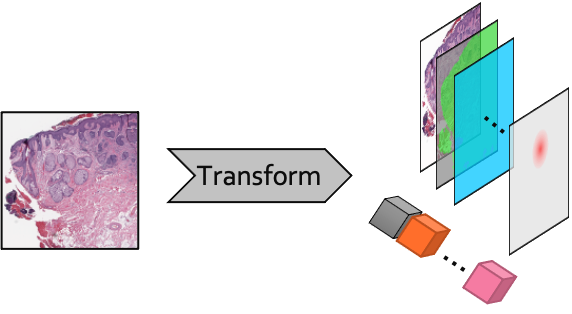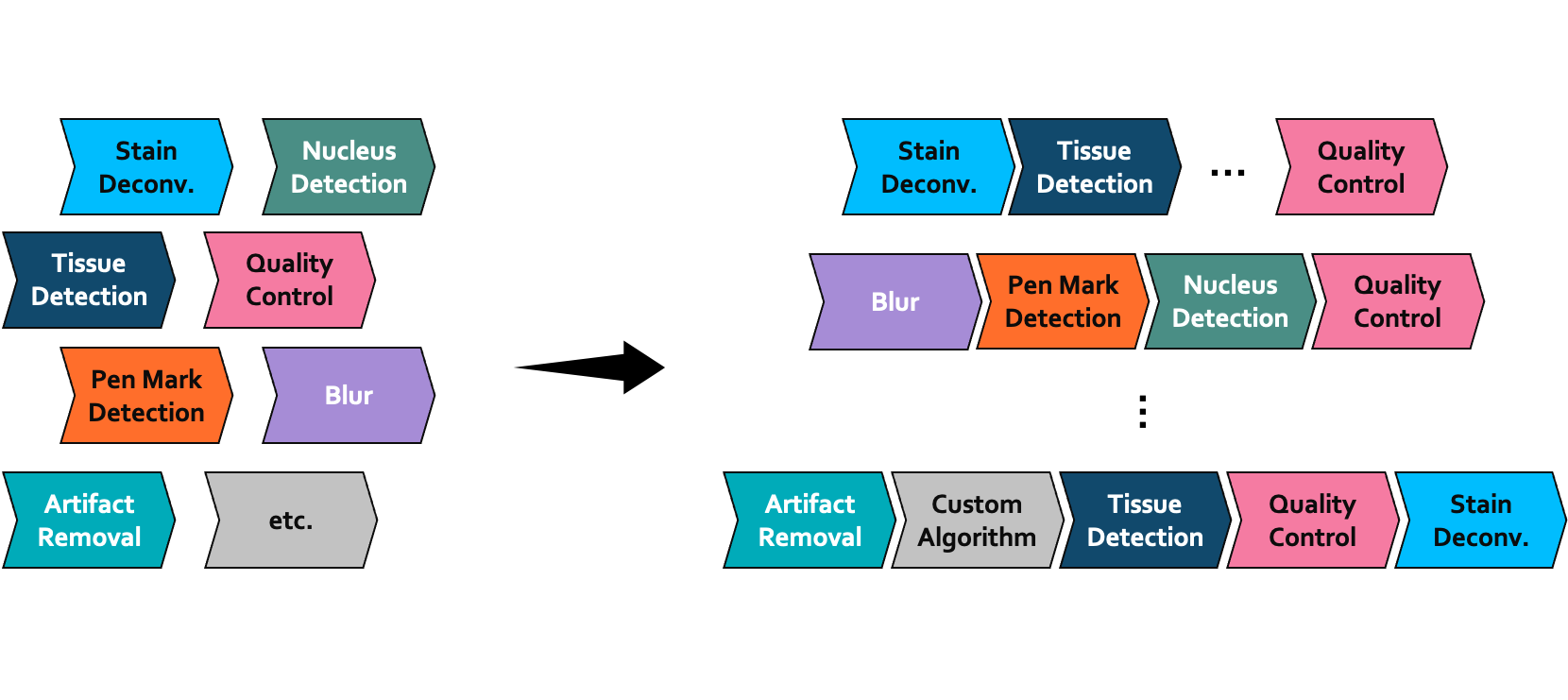Creating Preprocessing Pipelines
Preprocessing pipelines define how raw images are transformed and prepared for downstream analysis.
The pathml.preprocessing module provides tools to define modular preprocessing pipelines for whole-slide images.
In this section we will walk through how to define a
Pipeline object by composing pre-made
Transform objects, and how to implement a
new custom Transform.
What is a Transform?
The Transform is the building block for creating preprocessing pipelines.
Each Transform applies a specific operation to a
Tile which may include modifying
an input image, creating or modifying pixel-level metadata (i.e., masks), or creating or modifying image-level metadata
(e.g., image quality metrics or an AnnData counts matrix).

Schematic diagram of a Transform operating on a tile.
In this example, several masks are created (represented by stacked rectangles) as well as
several labels (depicted here as cubes).

Examples of several types of Transform
What is a Pipeline?
A preprocessing pipeline is a set of independent operations applied sequentially.
In PathML, a Pipeline is defined as a sequence of
Transform objects. This makes it easy to compose a custom
Pipeline by mixing-and-matching:

Schematic diagram of Pipeline composition from a set of modular components
In the PathML API, this is concise:
from pathml.preprocessing import Pipeline, BoxBlur, TissueDetectionHE
pipeline = Pipeline([
BoxBlur(kernel_size=15),
TissueDetectionHE(mask_name = "tissue", min_region_size=500,
threshold=30, outer_contours_only=True)
])
In this example, the preprocessing pipeline will first apply a box blur kernel, and then apply tissue detection.
Creating custom Transforms
Note
For advanced users
In some cases, you may want to implement a custom Transform.
For example, you may want to apply a transformation which is not already implemented in PathML.
Or, perhaps you want to create a new transformation which combines several others.
To define a new custom Transform,
all you need to do is create a class which inherits from Transform and
implements an apply() method which takes a Tile as an argument and modifies it in place.
You may also implement a functional method F(), although that is not strictly required.
For example, let’s take a look at how BoxBlur is implemented:
class BoxBlur(Transform):
"""Box (average) blur kernel."""
def __init__(self, kernel_size=5):
self.kernel_size = kernel_size
def F(self, image):
return cv2.boxFilter(image, ksize = (self.kernel_size, self.kernel_size), ddepth = -1)
def apply(self, tile):
tile.image = self.F(tile.image)
Once you define your custom Transform,
you can plug it in with any of the other Pipeline, etc.